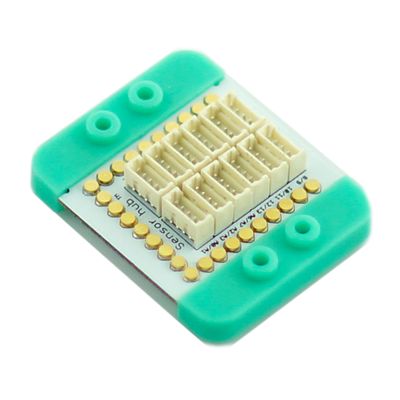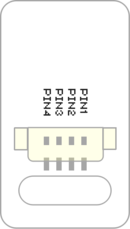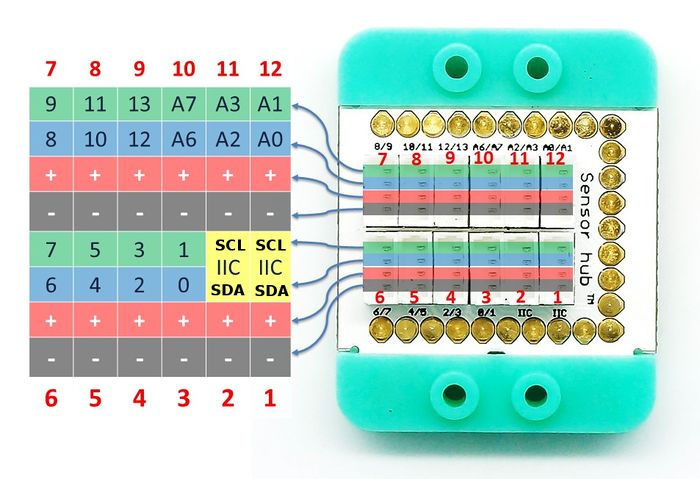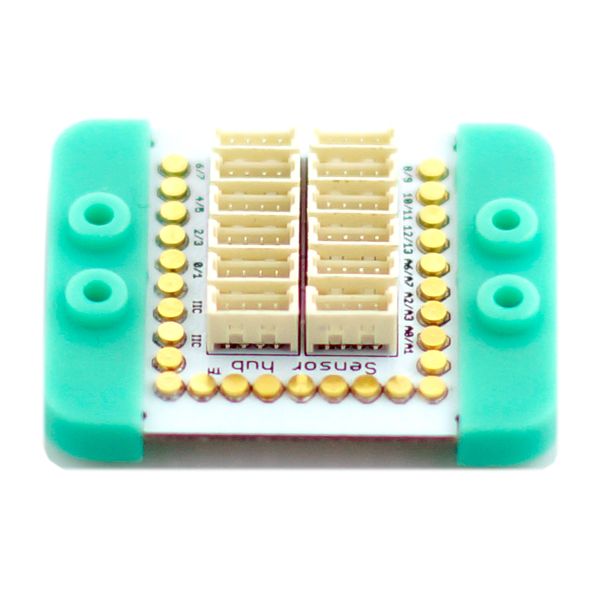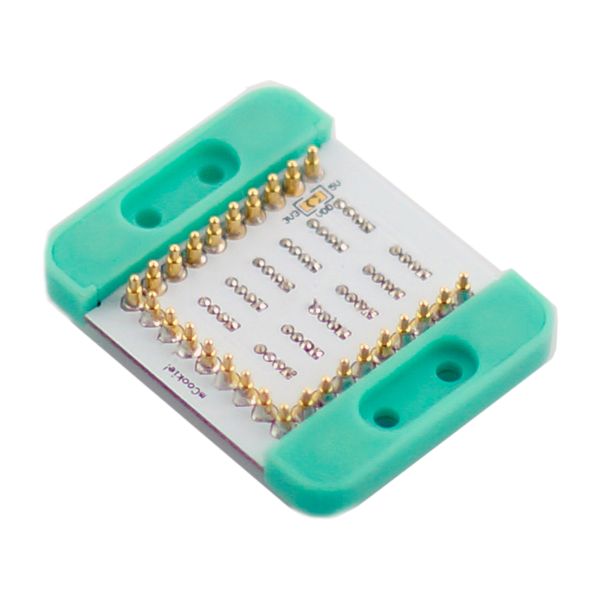Difference between revisions of "MCookie-Hub"
From Microduino Wiki
(→Pin Description) |
(→Specification) |
||
| Line 65: | Line 65: | ||
| − | [[file:mCookie-sensorhub_rule.JPG|thumb| | + | <div style="float: left"> |
| + | {| class="wikitable" | ||
| + | |+ style="text-align: Center;" | <big>Label Header and GPIO-A / GPIO-B Mapping</big> | ||
| + | |- | ||
| + | ! # !! Label !! GPIO-A !! GPIO-B | ||
| + | |- | ||
| + | | 1 || IIC || rowspan="2" | SDA || rowspan="2" | SCL | ||
| + | |- | ||
| + | | 2|| IIC | ||
| + | |- | ||
| + | | 3 || 0/1 || 0 || 1 | ||
| + | |- | ||
| + | | 4 || 2/3 || 2 || 3 | ||
| + | |- | ||
| + | | 5 || 4/5 || 4 || 5 | ||
| + | |- | ||
| + | | 6 || 6/7 || 6 || 7 | ||
| + | |- | ||
| + | | 7 || 8/9 || 8 || 9 | ||
| + | |- | ||
| + | | 8 || 10/11 || 10 || 11 | ||
| + | |- | ||
| + | | 9 || 12/13 || 12 || 13 | ||
| + | |- | ||
| + | | 10 || A6/A7 || A6 || A7 | ||
| + | |- | ||
| + | | 11 || A2/A3 || A2 || A3 | ||
| + | |- | ||
| + | | 12 || A0/A1 || A0 || A1 | ||
| + | |} | ||
| + | </div> | ||
| + | <div style="float: left;"> | ||
| + | [[file:mCookie-sensorhub_rule.JPG|thumb|700px|center]] | ||
| + | </div> | ||
| + | <div style="clear:both;"> | ||
==Document== | ==Document== | ||
Revision as of 22:47, 12 April 2017
| Language: | English • 中文 |
|---|
|
mCookie-Hub is designed for ease of the connection between Microduino Sensor Series and the core modules on the UPIN27 base board as well as further extended experiment.
ContentsFeatures
Specification
Pin DescriptionMost sensors / trinkets use the first signal (SIGNAL-A) when connecting to the sensor hub.
Example
Each sensor / trinket page has more specific details to which pins are used, but the general rule is use the first signal (SIGNAL-A). Each sensor / trinket may require usage of a specific type of pin, such as an analog pin. This information can be found on the wiki page for that specific sensor / trinket.
DocumentDevelopment
ProjectPurchaseHistoryPicturesVideo |
